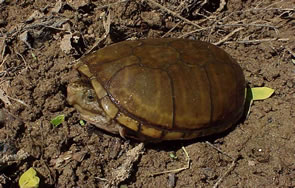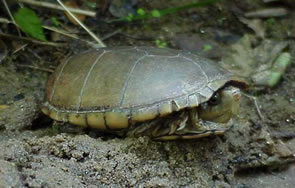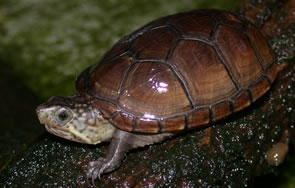
Eastern Mud Turtle
Kinosternon subrubrum
Description: This is a small turtle with a smooth, unmarked carapace (top of shell), which ranges in coloration from olive to dark brown. The plastron (bottom of shell) is double-hinged and can be yellow or brown. Adults range from 3 to 5 inches (7-10 cm) in carapace length.
Feeding/Diet: Eastern mud turtles are omnivorous. They are known to feed on crustaceans (such as crayfish), mollusks, aquatic insects, and seeds.
Activity/Behavior: Eastern mud turtles are semi-aquatic. They are not strong swimmers and usually crawl along the bottom. They are more terrestrial than their relatives, the musk turtles, and hibernate in forests buried an inch or two below the surface.
Habitat/Range: Eastern mud turtles prefer shallow and sluggish bodies of water. They are able to tolerate brackish water and are sometimes encountered in salt marshes.
Reproduction: Mud turtles lay between 2 and 5 eggs during June or July. Eastern mud turtle eggs are hard shelled and do not absorb water like most turtle eggs. The young hatch in August or September.
Miscellaneous: Hatchling mud turtles are often mistaken for snapping turtles. An easy way to tell the two apart is a mud turtle has a larger, hinged plastron and snapping turtle hatchlings have a very small plastron and a long tail.
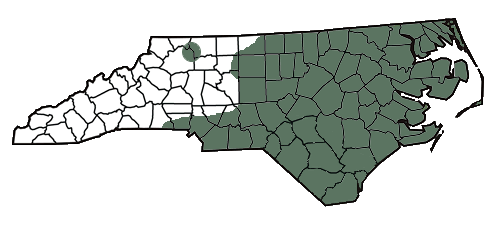
The shaded region represents the range of the eastern mud turtle in North Carolina.
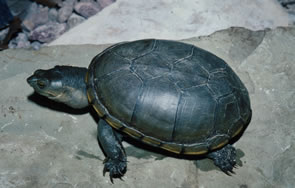
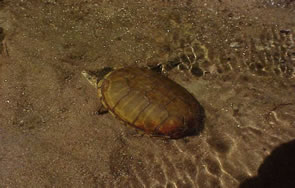
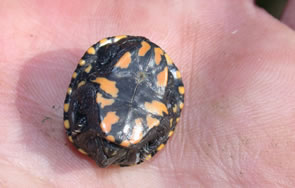
Photo by J. Willson
